Xia Zhu
CLO: Efficient LLM Inference System with CPU-Light KVCache Offloading via Algorithm-System Co-Design
Nov 18, 2025Abstract:The growth of million-token LLMs exposes the scalability limits of inference systems, where the KVCache dominates memory usage and data transfer overhead. Recent offloading systems migrate the KVCache to CPU memory and incorporate top-k attention to reduce the volume of data transferred from the CPU, while further applying system-level optimizations such as on-GPU caching and prefetching to lower transfer overhead. However, they overlook the CPU bottleneck in three aspects: (1) substantial overhead of fine-grained dynamic cache management performed on the CPU side, (2) significant transfer overhead from poor PCIe bandwidth utilization caused by heavy gathering operations at the CPU side, and (3) GPU runtime bubbles introduced by coarse-grained CPU-centric synchronization. To address these challenges, we propose CLO, a CPU-light KVCache offloading system via algorithm-system co-design. CLO features: (1) a coarse-grained head-wise approximate on-GPU caching strategy with negligible cache management cost, (2) seamless combination of data prefetching and on-GPU persistent caching for lower transfer overhead, (3) a zero-copy transfer engine to fully exploit PCIe bandwidth, and a GPU-centric synchronization method to eliminate GPU stalls. Evaluation on two widely-used LLMs demonstrates that CLO achieves comparable accuracy to state-of-the-art systems, while substantially minimizing CPU overhead, fully utilizing PCIe bandwidth, thus improving decoding throughput by 9.3%-66.6%. Our results highlight that algorithm-system co-design is essential for memory-constrained LLM inference on modern GPU platforms. We open source CLO at https://github.com/CommediaJW/CLO.
Maintaining Adversarial Robustness in Continuous Learning
Feb 17, 2024Abstract:Adversarial robustness is essential for security and reliability of machine learning systems. However, the adversarial robustness gained by sophisticated defense algorithms is easily erased as the neural network evolves to learn new tasks. This vulnerability can be addressed by fostering a novel capability for neural networks, termed continual robust learning, which focuses on both the (classification) performance and adversarial robustness on previous tasks during continuous learning. To achieve continuous robust learning, we propose an approach called Double Gradient Projection that projects the gradients for weight updates orthogonally onto two crucial subspaces -- one for stabilizing the smoothed sample gradients and another for stabilizing the final outputs of the neural network. The experimental results on four benchmarks demonstrate that the proposed approach effectively maintains continuous robustness against strong adversarial attacks, outperforming the baselines formed by combining the existing defense strategies and continual learning methods.
Wireless, Customizable Coaxially-shielded Coils for Magnetic Resonance Imaging
Dec 19, 2023Abstract:Anatomy-specific RF receive coil arrays routinely adopted in magnetic resonance imaging (MRI) for signal acquisition, are commonly burdened by their bulky, fixed, and rigid configurations, which may impose patient discomfort, bothersome positioning, and suboptimal sensitivity in certain situations. Herein, leveraging coaxial cables' inherent flexibility and electric field confining property, for the first time, we present wireless, ultra-lightweight, coaxially-shielded MRI coils achieving a signal-to-noise ratio (SNR) comparable to or surpassing that of commercially available cutting-edge receive coil arrays with the potential for improved patient comfort, ease of implementation, and significantly reduced costs. The proposed coils demonstrate versatility by functioning both independently in form-fitting configurations, closely adapting to relatively small anatomical sites, and collectively by inductively coupling together as metamaterials, allowing for extension of the field-of-view of their coverage to encompass larger anatomical regions without compromising coil sensitivity. The wireless, coaxially-shielded MRI coils reported herein pave the way toward next generation MRI coils.
Wearable Coaxially-shielded Metamaterial for Magnetic Resonance Imaging
Dec 15, 2023Abstract:Recent advancements in metamaterials have yielded the possibility of a wireless solution to improve signal-to-noise ratio (SNR) in magnetic resonance imaging (MRI). Unlike traditional closely packed local coil arrays with rigid designs and numerous components, these lightweight, cost-effective metamaterials eliminate the need for radio frequency (RF) cabling, baluns, adapters, and interfaces. However, their clinical adoption has been limited by their low sensitivity, bulky physical footprint, and limited, specific use cases. Herein, we introduce a wearable metamaterial developed using commercially available coaxial cable, designed for a 3.0 T MRI system. This metamaterial inherits the coaxially-shielded structure of its constituent coaxial cable, effectively containing the electric field within the cable, thereby mitigating the electric coupling to its loading while ensuring safer clinical adoption, lower signal loss, and resistance to frequency shifts. Weighing only 50g, the metamaterial maximizes its sensitivity by conforming to the anatomical region of interest. MRI images acquired using this metamaterial with various pulse sequences demonstrate an up to 2-fold SNR enhancement when compared to a state-of-the-art 16-channel knee coil. This work introduces a novel paradigm for constructing metamaterials in the MRI environment, paving the way for the development of next-generation wireless MRI technology.
Conformal Metamaterials with Active Tunability and Self-adaptivity for Magnetic Resonance Imaging
Sep 29, 2023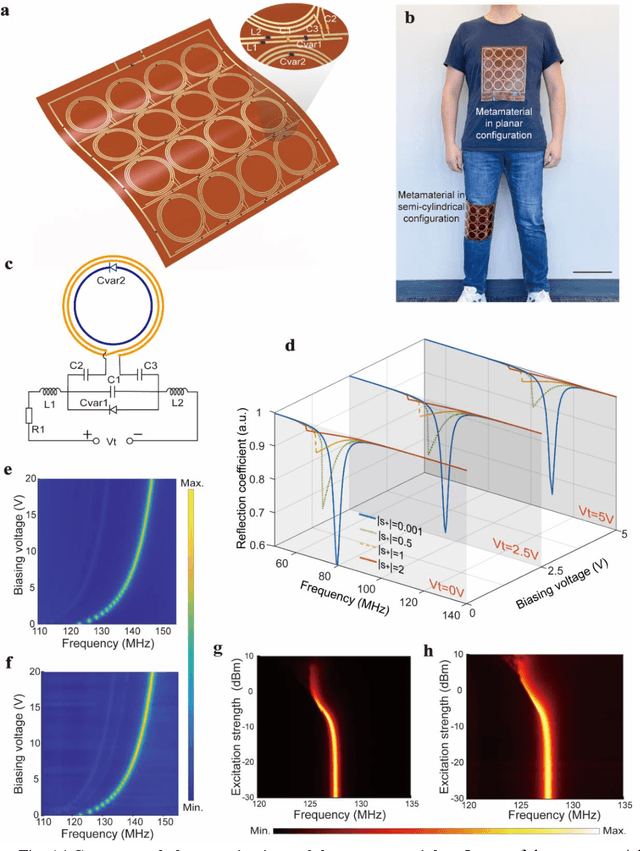
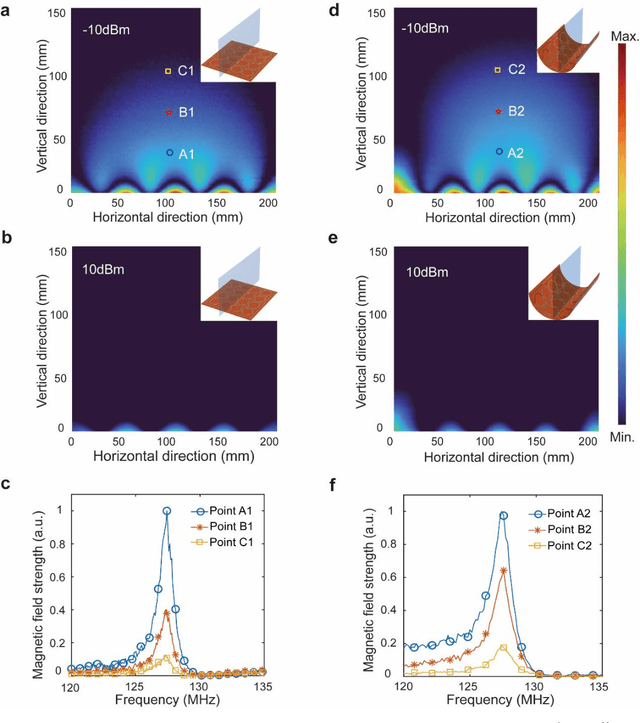
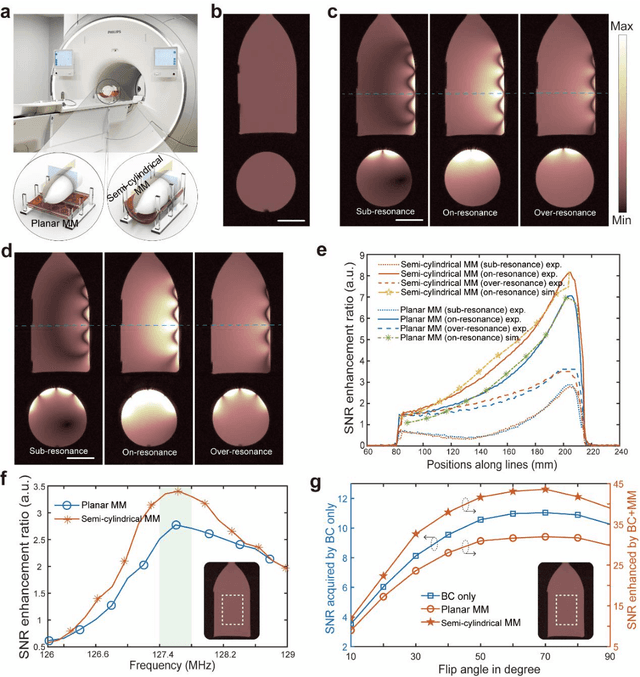

Abstract:Ongoing effort has been devoted to applying metamaterials to boost the imaging performance of magnetic resonance imaging owing to their unique capacity for electromagnetic field confinement and enhancement. However, there are still major obstacles to widespread clinical adoption of conventional metamaterials due to several notable restrictions, namely: their typically bulky and rigid structures, deviations in their optimal resonance frequency, and their inevitable interference with the transmission RF field in MRI. Herein, we address these restrictions and report a conformal, smart metamaterial, which may not only be readily tuned to achieve the desired, precise frequency match with MRI by a controlling circuit, but is also capable of selectively amplifying the magnetic field during the RF reception phase by sensing the excitation signal strength passively, thereby remaining off during the RF transmission phase and thereby ensuring its optimal performance when applied to MRI as an additive technology. By addressing a host of current technological challenges, the metamaterial presented herein paves the way toward the wide-ranging utilization of metamaterials in clinical MRI, thereby translating this promising technology to the MRI bedside.
Interpretable System Identification and Long-term Prediction on Time-Series Data
Mar 02, 2023Abstract:Time-series prediction has drawn considerable attention during the past decades fueled by the emerging advances of deep learning methods. However, most neural network based methods lack interpretability and fail in extracting the hidden mechanism of the targeted physical system. To overcome these shortcomings, an interpretable sparse system identification method without any prior knowledge is proposed in this study. This method adopts the Fourier transform to reduces the irrelevant items in the dictionary matrix, instead of indiscriminate usage of polynomial functions in most system identification methods. It shows an interpretable system representation and greatly reduces computing cost. With the adoption of $l_1$ norm in regularizing the parameter matrix, a sparse description of the system model can be achieved. Moreover, Three data sets including the water conservancy data, global temperature data and financial data are used to test the performance of the proposed method. Although no prior knowledge was known about the physical background, experimental results show that our method can achieve long-term prediction regardless of the noise and incompleteness in the original data more accurately than the widely-used baseline data-driven methods. This study may provide some insight into time-series prediction investigations, and suggests that an white-box system identification method may extract the easily overlooked yet inherent periodical features and may beat neural-network based black-box methods on long-term prediction tasks.
Spectral Temporal Graph Neural Network for Multivariate Time-series Forecasting
Mar 13, 2021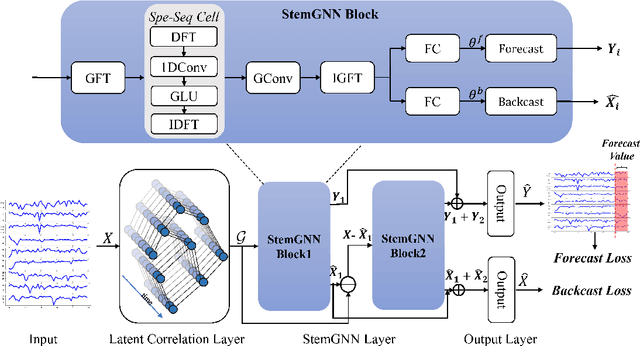

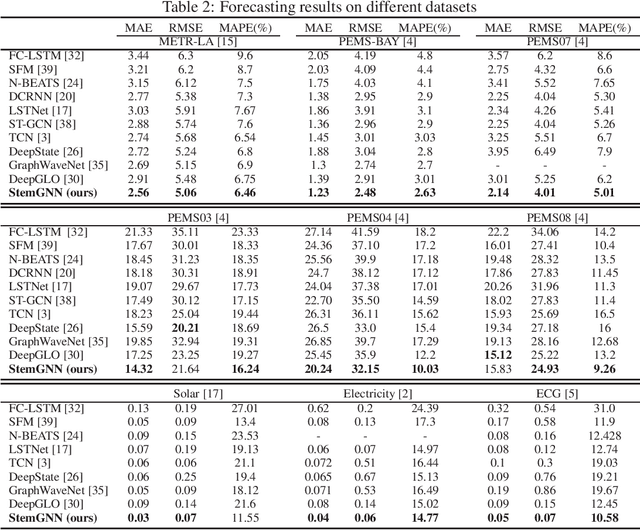
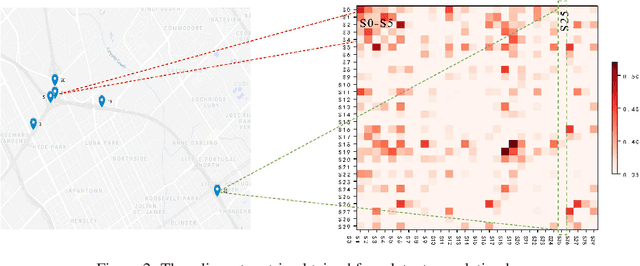
Abstract:Multivariate time-series forecasting plays a crucial role in many real-world applications. It is a challenging problem as one needs to consider both intra-series temporal correlations and inter-series correlations simultaneously. Recently, there have been multiple works trying to capture both correlations, but most, if not all of them only capture temporal correlations in the time domain and resort to pre-defined priors as inter-series relationships. In this paper, we propose Spectral Temporal Graph Neural Network (StemGNN) to further improve the accuracy of multivariate time-series forecasting. StemGNN captures inter-series correlations and temporal dependencies \textit{jointly} in the \textit{spectral domain}. It combines Graph Fourier Transform (GFT) which models inter-series correlations and Discrete Fourier Transform (DFT) which models temporal dependencies in an end-to-end framework. After passing through GFT and DFT, the spectral representations hold clear patterns and can be predicted effectively by convolution and sequential learning modules. Moreover, StemGNN learns inter-series correlations automatically from the data without using pre-defined priors. We conduct extensive experiments on ten real-world datasets to demonstrate the effectiveness of StemGNN. Code is available at https://github.com/microsoft/StemGNN/
MFPP: Morphological Fragmental Perturbation Pyramid for Black-Box Model Explanations
Jun 04, 2020
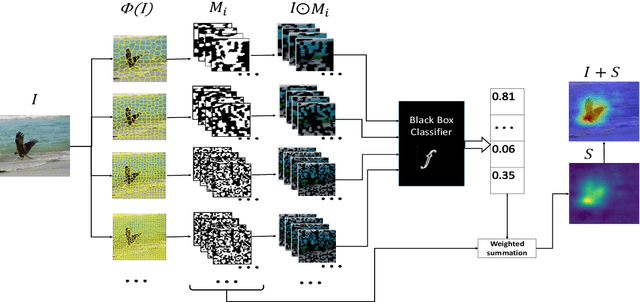
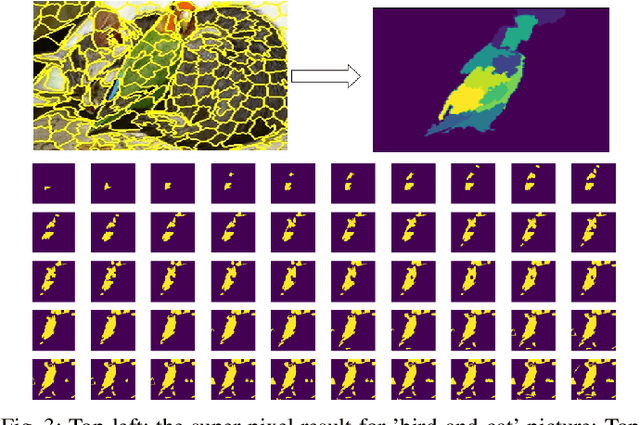
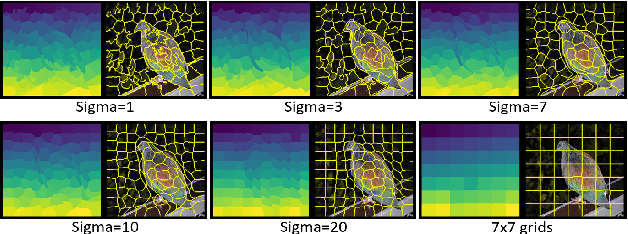
Abstract:With the increasing popularity of deep neural networks (DNNs), it has recently been applied to many advanced and diverse tasks, such as medical diagnosis, automatic pilot etc. Due to the lack of transparency of the deep models, it causes serious concern about widespread deployment of ML/DL technologies. In this work, we address the Explainable AI problem of black-box classifiers which take images as input and output probabilities of classes. We propose a novel technology, the Morphological Fragmental Perturbation Pyramid (MFPP), in which we segment input image into different scales of fragments and randomly mask them as perturbation to generate an importance map that indicates how salient each pixel is for prediction results of the black-box DNNs. Compared to existing input sampling perturbation methods, this pyramid structure fragmentation has proven to be more efficient and it can better explore the morphological information of input image to match its semantic information, while it does not require any values inside model. We qualitatively and quantitatively demonstrate that MFPP matches and exceeds the performance of state-of-the-art black-box explanation methods on multiple models and datasets.
Incorporating structured assumptions with probabilistic graphical models in fMRI data analysis
May 29, 2020
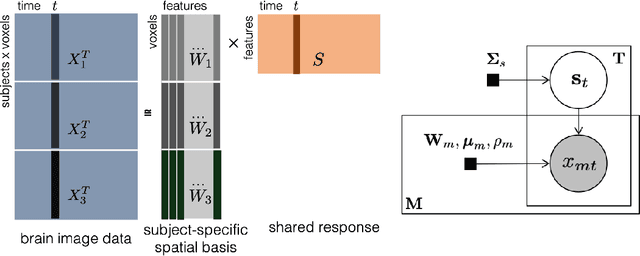
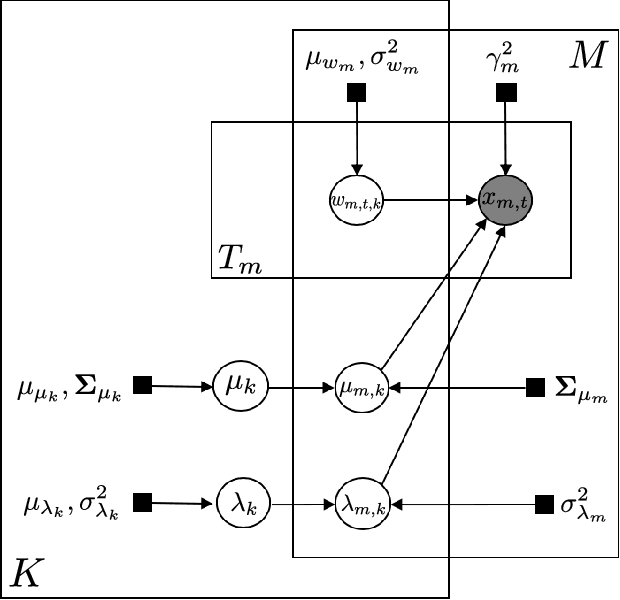
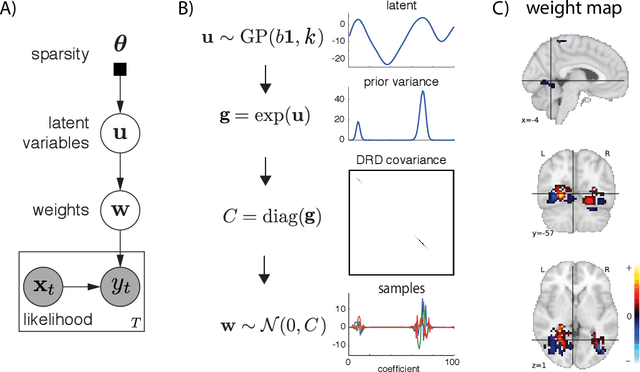
Abstract:With the wide adoption of functional magnetic resonance imaging (fMRI) by cognitive neuroscience researchers, large volumes of brain imaging data have been accumulated in recent years. Aggregating these data to derive scientific insights often faces the challenge that fMRI data are high-dimensional, heterogeneous across people, and noisy. These challenges demand the development of computational tools that are tailored both for the neuroscience questions and for the properties of the data. We review a few recently developed algorithms in various domains of fMRI research: fMRI in naturalistic tasks, analyzing full-brain functional connectivity, pattern classification, inferring representational similarity and modeling structured residuals. These algorithms all tackle the challenges in fMRI similarly: they start by making clear statements of assumptions about neural data and existing domain knowledge, incorporating those assumptions and domain knowledge into probabilistic graphical models, and using those models to estimate properties of interest or latent structures in the data. Such approaches can avoid erroneous findings, reduce the impact of noise, better utilize known properties of the data, and better aggregate data across groups of subjects. With these successful cases, we advocate wider adoption of explicit model construction in cognitive neuroscience. Although we focus on fMRI, the principle illustrated here is generally applicable to brain data of other modalities.
* update with the version accepted by Neuropsychologia
PipeNet: Selective Modal Pipeline of Fusion Network for Multi-Modal Face Anti-Spoofing
Apr 24, 2020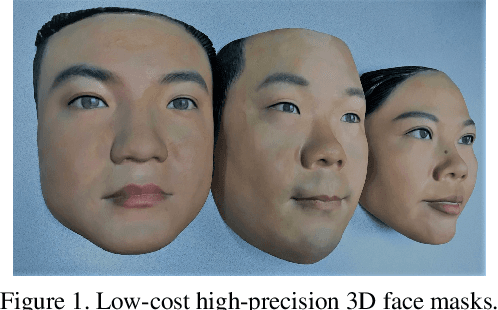

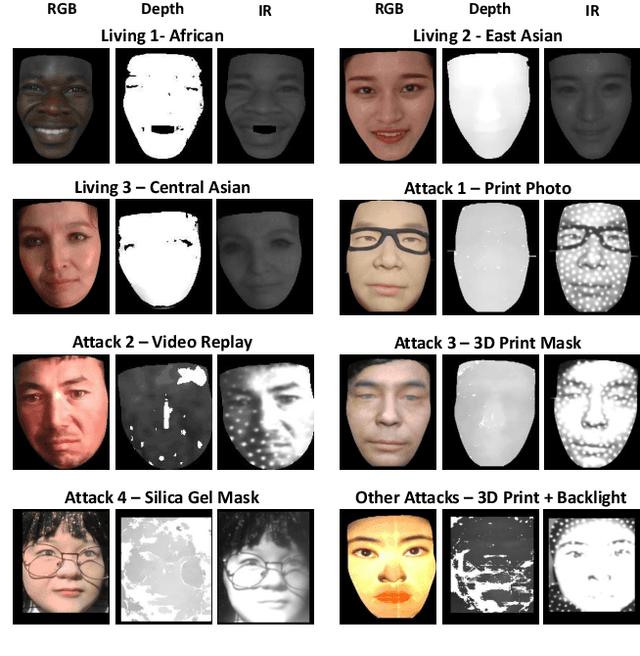

Abstract:Face anti-spoofing has become an increasingly important and critical security feature for authentication systems, due to rampant and easily launchable presentation attacks. Addressing the shortage of multi-modal face dataset, CASIA recently released the largest up-to-date CASIA-SURF Cross-ethnicity Face Anti-spoofing(CeFA) dataset, covering 3 ethnicities, 3 modalities, 1607 subjects, and 2D plus 3D attack types in four protocols, and focusing on the challenge of improving the generalization capability of face anti-spoofing in cross-ethnicity and multi-modal continuous data. In this paper, we propose a novel pipeline-based multi-stream CNN architecture called PipeNet for multi-modal face anti-spoofing. Unlike previous works, Selective Modal Pipeline (SMP) is designed to enable a customized pipeline for each data modality to take full advantage of multi-modal data. Limited Frame Vote (LFV) is designed to ensure stable and accurate prediction for video classification. The proposed method wins the third place in the final ranking of Chalearn Multi-modal Cross-ethnicity Face Anti-spoofing Recognition Challenge@CVPR2020. Our final submission achieves the Average Classification Error Rate (ACER) of 2.21 with Standard Deviation of 1.26 on the test set.
 Add to Chrome
Add to Chrome Add to Firefox
Add to Firefox Add to Edge
Add to Edge